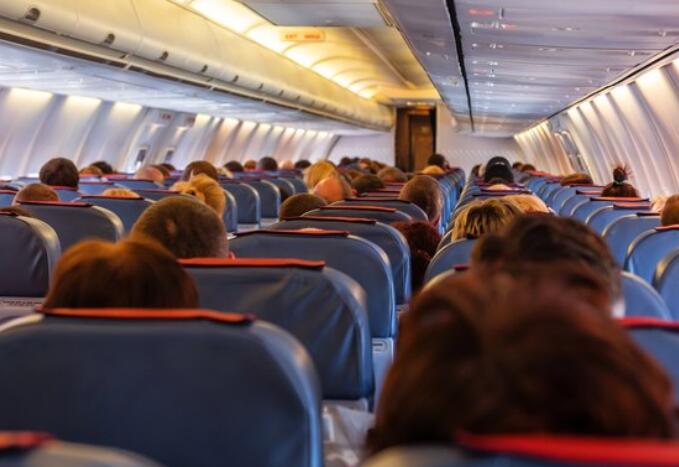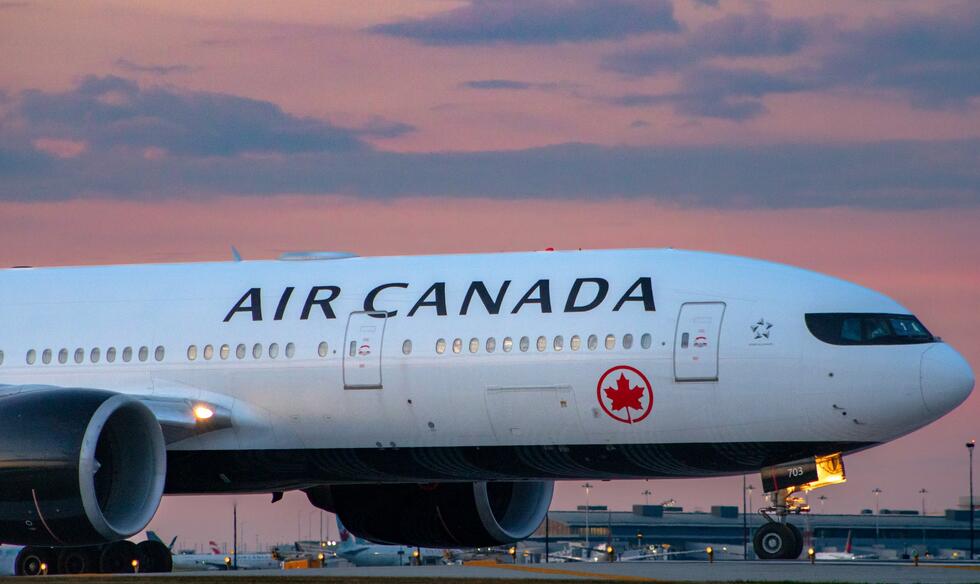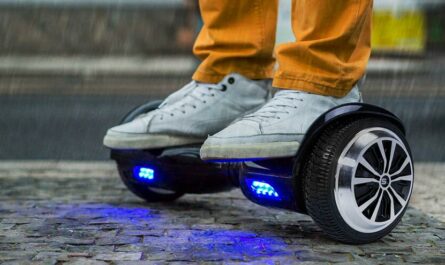Are you planning to take your hoverboard on your next flight? Hold on, because you might need to reconsider. When it comes to hoverboards, airlines have implemented strict regulations due to safety concerns. In this article, we will delve into the question, “Are hoverboards allowed on airplanes?” We will provide you with everything you need to know about the rules and restrictions regarding hoverboards on flights. So, before you pack your bags, make sure to read this article to stay informed and avoid any surprises at the airport.
Table of Contents
Are Hoverboards Allowed on Airplanes?
The answer is not a simple yes or no. The FAA and major airlines have outright bans on transporting hoverboards and their lithium batteries within passenger compartments or checked luggage. This blanket ban prohibits them on planes overall.
However, exceptions can be made on a case-by-case basis for assistive medical devices, at an airline’s discretion. So under very specific conditions, a hoverboard may be permitted on certain airlines.
But the default policy is that hoverboards are prohibited on flights due to well-founded fire concerns. Exceptions require extensive documentation and pre-approval directly from the airline.
So in most normal travel circumstances, no, you cannot bring your hoverboard onto an airplane. But with medical accommodations, some airlines may allow a hoverboard on board.
Why Are Hoverboards Banned on Some Airlines?
Hoverboards are banned on airplanes for a few key reasons related to safety and logistics:
1. Lithium Batteries Pose a Fire Hazard
The lithium-ion batteries that power hoverboards can overheat and cause fires. There have been reports of cheap or defective hoverboard batteries combusting and causing fires. This is the primary reason airlines and the FAA restrict hoverboards.
Lithium batteries have been linked to fires in the cargo holds of airplanes. The batteries can ignite easily at high altitudes where the atmosphere is low on oxygen. A fire while in-flight is an extreme hazard. Ever since hoverboards gained popularity, there have been numerous incidents of them catching fire, even when not being used.
For example, in 2016 a hoverboard spontaneously combusted minutes after being unloaded from a flight, forcing passengers to evacuate. This demonstrates why airlines are cautious about lithium battery-powered devices.
2. Weight and Size Limits for Carry-On Luggage
Standard airline rules restrict the size and weight of items that can be brought onboard in carry-on luggage. The typical dimensions of a hoverboard exceed many airline policies for carry-on bags.
For safety, airlines limit the number of large and heavy items passengers can store in overhead bins or underneath seats. Hoverboards are bulky compared to standard luggage designed to maximize carry-on space. Their weight also approaches or exceeds the limits airlines put on carry-on items.
You likely won’t get a hoverboard past TSA checkpoints or on board a plane as a piece of carry-on luggage. Airlines want to avoid crowded bins that could potentially fall open and injure passengers if overstuffed.
3. Could Be Dangerous in Tight Quarters
Airplanes are a tight space with little room to move about the cabin freely. A passenger losing balance on a hoverboard and falling could potentially injure other passengers in this confined environment.
The rider could easily strike their head or limbs on seats, armrests, and other hard surfaces. If the hoverboard shoots out from under them, it could strike other passengers as well, especially small children.
Airlines want to limit loose items that could cause injuries if they get out of control in the tight quarters of an airplane cabin. A rider crashing into the drink cart could also pose a hazard.
4. FAA Ban on Hoverboards with Lithium Batteries in Cargo
The FAA prohibits transporting hoverboards and other devices with lithium batteries in an aircraft’s cargo hold. This includes checked baggage that goes underneath the plane.
They implemented this rule due to the substantial risk of lithium battery fires down in the cargo hold where a fire cannot be easily extinguished in flight. Flight attendants also cannot monitor checked baggage for signs of smoke or fire like they can with carry-ons.
So not only can you not carry a hoverboard onto the plane, but you also cannot check it or store it in baggage during your flight. The FAA ban encompasses all lithium battery-powered personal transportation devices.

Are There Any Exceptions to the Rules?
While hoverboards are banned as carry-on or checked luggage, there are some rare exceptions that may allow you to fly with one:
1. Smaller Self-Balancing Mobility Devices
The ban applies specifically to hoverboards and similar full-sized self-balancing electric scooters. However, smaller self-balancing mobility devices may be permitted.
For example, mini Segways and other smaller scooters may meet carry-on size limits, especially if they can fold down into an even more compact form. Models designed for medical assistance purposes may also receive more leeway from airlines.
You will need to contact the airline directly to see if they consider your particular device exempt from the hoverboard ban. Be prepared to provide detailed specifications and descriptions to prove it is fundamentally different from a hoverboard.
2. Airlines Can Make Exceptions for Assistive Devices
Many airlines allow exceptions for assistive devices that help passengers with disabilities or medical conditions. With proper documentation from your doctor, you may be able to get an exemption from the hoverboard ban.
This would allow you to carry your hoverboard on board as a medical device, similar to how wheelchairs are handled. Airlines are flexible about assistive devices to accommodate diverse populations. Exceptions are handled on a case-by-case basis.
To pursue this option, you will need a signed letter from your physician confirming your need for the device during air travel for medical purposes. You’ll need documentation proving it is necessary for mobility assistance.
3. Each Airline Interprets the Rules Differently
While the FAA sets baseline restrictions on hoverboards, individual airlines can interpret the rules around exceptions differently. One airline may continue enforcing the all-out ban, while another allows hoverboards as assistive devices.
For example, Delta Airlines specifies that hoverboards are prohibited regardless of power source or device type. In contrast, American Airlines leaves the door open for assistive device exceptions.
So it is critical to check directly with any airline you plan to fly with to fully understand their specific policies around hoverboards and similar devices. Do not assume that an accommodation made by one carrier will be honored by another.
Tips for Flying with Your Hoverboard
If you absolutely must fly with your hoverboard, you have a few tricky options:
1. Ship It Separately as Cargo
Some airlines may allow you to ship your hoverboard as air freight cargo if you remove the lithium battery first. This allows you to transport the hoverboard frame and carry the battery on board yourself.
Reassembling the device at your destination poses some risk if you improperly reconnect the battery. You’ll need to thoroughly repack the battery to prevent any inadvertent contact that could cause a short. Using a hard case storage container specifically designed for shipping lithium batteries is recommended.
Always check with your airline far in advance to see if this option is allowed under their policies.
2. Drive or Take a Train for Shorter Trips
For domestic trips and shorter flights, consider driving or taking a train instead. This allows you to easily bring your hoverboard without having to worry about airline restrictions at all. Road trips also give you more flexibility to use your hoverboard once you reach your destination.
Trains like Amtrak also allow hoverboards if you bring the battery on board separately and store it as a carry-on item. This is a safer alternative to air travel for medium-distance transportation.
3. Get a Medical Device Exemption from Your Doctor
If your hoverboard is truly needed due to a medical condition or disability, obtain documentation from your physician. Make your case to the airline by having your doctor explain why the device is necessary during air travel to accommodate your needs.
Provide as much detail as possible about your condition and how the hoverboard enables mobility assistance. Some airlines may still deny the request, but a strong case improves your chances of getting an exemption.
4. Always Research Airline Policies in Advance
Airline policies regarding hoverboards can change rapidly in response to new safety regulations and updates to their rules around assistive devices. Do your homework when choosing which airline to fly with.
Call customer service or contact the airline via social media to get definitive clarification directly from the source on their most up-to-date hoverboard rules. Don’t assume that a past policy you researched is still in effect today.
Tips for Transporting Your Hoverboard Safely
If you are able to find an airline that will allow you to fly with your hoverboard, you’ll want to take steps to transport it safely:
1. Use a Hard Case for Your Hoverboard
Invest in a hard case designed specifically for hoverboards to protect it from damage. Padding inside will prevent anything from shifting around. A hard case also helps contain any issues if the battery were to ignite. Look for a UL-certified case for the highest safety standards.
2. Take the Battery On Board Separately
Most airlines will require that the hoverboard battery be removed and carried on separately as a carry-on item. This allows easy monitoring and reduces fire risks. Be extremely careful when removing and transporting the battery. Use insulation or padding to prevent accidental contacts or shorts.
3. Check the Battery Charge Level
Never fly with a fully charged battery, as this is when the risk of overheating is highest. Maintain a charge of around 30% to 50% before flying for optimal safety. Also, check that the battery is not damaged in any way.
4. Prepare Documentation
Have copies of your medical device exemption paperwork and any other documentation that gives approval for your hoverboard to fly. Present this if any issues arise during check-in or at security checkpoints.
5. Arrive Early
Give yourself ample extra time at the airport in case there are questions about your hoverboard. Having to explain your situation to multiple staff members or agents could add delays.
6. Understand the Restrictions
Carefully review all restrictions from the airline about flying with hoverboards. They may prohibit use during the flight or require storing it in a special compartment. Know the rules to avoid problems.
How to Ship Your Hoverboard?
If you opt to ship your hoverboard separately by road, here are some tips for safe transportation:
1. Use a Reputable Company
Choose an established company with experience shipping lithium batteries like UPS or FedEx. Avoid non-traditional shipping companies. Only use ground transportation, not air freight.
2. Remove the Battery
Take the battery out of the hoverboard whenever possible during shipping for vastly improved safety. Properly pack and cushion the battery. Many companies require this.
3. Insure Your Package
Purchase additional insurance to cover any loss or damage. Be sure a signature is required upon delivery to avoid any package theft.
4. Use a Hard Case
Pack your hoverboard in a hard case designed for shipping to prevent damage. Include padding to keep the device from shifting during transport.
5. Label Properly
Clearly label the package to indicate it contains a lithium battery and hazardous materials. Follow all regulations for safe lithium battery shipping procedures.
6. Check Restrictions
Certain states or localities may have restrictions on shipping hoverboards and lithium batteries. Double-check any legal restrictions based on your destinations.
By closely following airline and shipping requirements, you can fly or transport your hoverboard as safely as possible. But it will always involve complications and restrictions compared to traveling with a regular suitcase.






